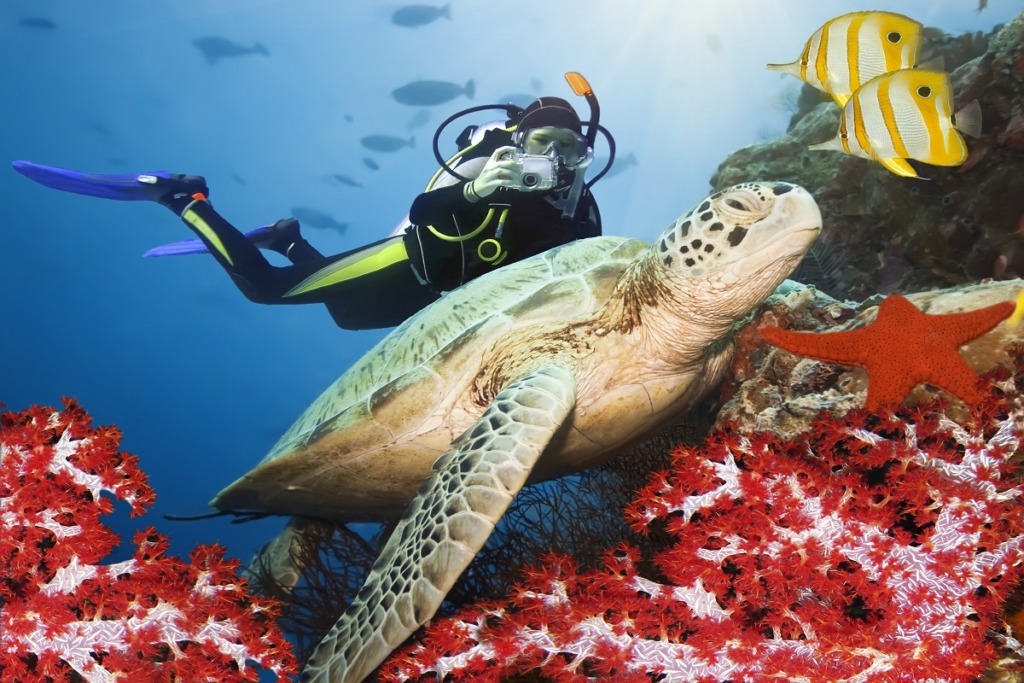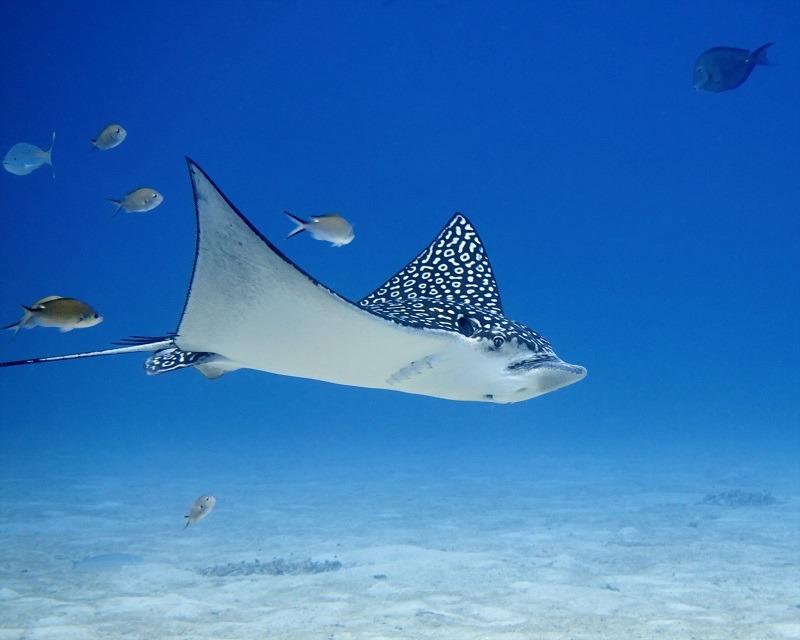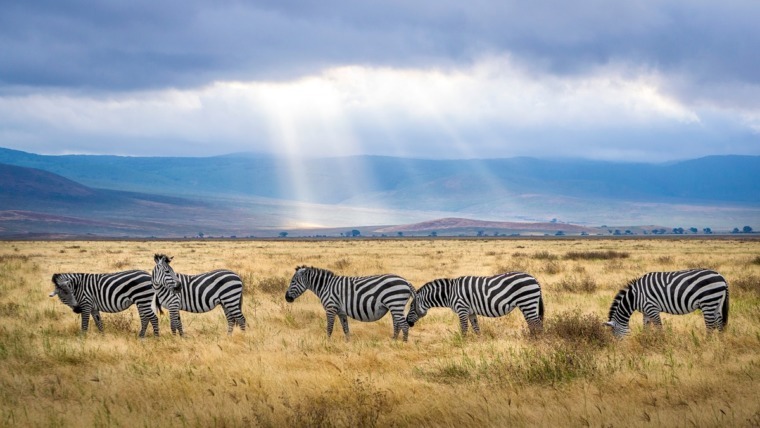
6 Steps To Plan A Diving Vacation In Cuba
Written by Orsolya Bartalis
Are you excited about international travel returning? I have to say I am looking forward to being back in the warm waters of the Caribbean. Crystal clear, great visibility, no dangerous currents and plenty to see both above and underwater. For divers who are looking for something truly unique, the underwater world of Cuba should be at the top of mind to visit. With an abundance of life and pristine waters that have been untouched by humans for centuries, this island nation will take you on a journey through unimaginable beauty!
The Cuban archipelago is situated in the northern Caribbean where three major oceans come together to form one of Earth’s most unique and exciting habitats. It is home to the second-largest coral reef, which features long drop-offs, what locals call “the Grand Canyon”. Then there are over 50 species of coral, bright colorful corals in various shapes and sizes on the reef, on shipwrecks, on walls and more. If the untouched, plentiful reefs with spectacular marine life wasn’t enough, there are caves in the sea and ones that come out in beautiful cenotes. Want more? You can even dive with sharks, plenty of them and not just one kind, if you keep calm enough these inquisitive creatures love to come up close to check out who is visiting their waters.

If this doesn’t all convince you that diving in Cuba is a must, I am not sure what would?
I know, you are thinking, it’s on the other side of the world! It is well worth the travel, the good news is that there are quicker routes now than there have been before. What are things that you should consider when planning your dicing Cuba vacation?
1. When is the best time to visit Cuba?
One of the biggest reasons people dive is to experience the unique and inquisitive marine wildlife. The thing about wildlife – especially of aquatic variety – is that they are very nomadic and often unpredictable.
If there is something specific you wish to see on your diving trip to Cuba, drop us a line. Yunior is an enthusiastic diver, with great connections and insights, so we can give you an idea as to what time of year to visit to give yourself the best opportunity to see the animal your heart is set on. It’s never 100% guaranteed on any given day that you will succeed, but by getting insider knowledge you are giving yourself the best possible chance to create the most magical moment of spotting the creature of your dreams.
The next thing to consider is the weather as depending on what’s going on above the water, it can affect your visibility below it. Technically speaking, you can dive all year round, but due to the large number of cyclones that hit Cuba in October and November, we advise you against travelling that time for a diving vacation. With our safety-first approach, we do not run diving tours at this time of the year.
For best visibility and most comfortable swimming temperatures, December to April is the optimal time.
2. To bring or not to bring my own equipment?
This is an infamous query, there isn’t a straightforward answer I can give you.
There are several logistical questions to answer to start when it comes to making this decision. Such as, how far do you have to travel to get to Cuba? Will your luggage go straight through? How long are you staying for? How many dives are you planning on doing - if you travel with us, there will be quite a few! What is the cost of equipment rental, again when you travel with us, this is already included. Is the diving centre reputable? Do they have relevant accreditations and experience? Do you have enough luggage space and the list goes on…

So here is what I’d recommend, as a very bare minimum, bring your mask! As whilst the diving centres will provide these for you, a perfect fit is not a guarantee. There is nothing worse and annoying than water seeping in as you are trying to enjoy the sights below water level.
Another point for consideration is that diving is a high-risk sport, and whilst we go through diving centres with relevant qualifications and experience, you may want to consider having your own diving computer and regulators. That way you can have 100% peace of mind that everything is in as good a condition as you’d like to have them.
3. How are you getting to Cuba?
No, it’s not a trick question and I’d say 99% of the time, this will be by plane and as air travel affects our bodies, whether you realise it or not. So as a diver, this is not something you can overlook.
Even though commercial airplanes have pressurized cabins, divers still are at risk for decompression sickness as the cabin pressure is still lower than ground-level atmospheric pressure. Effects can be the same when you ascend from your dive too quickly. Make sure you have sufficiently off-gassed before you board your flight.
There are a few reputable dive organizations that have different dive-fly recommendations, each one hinging on; the number of dives, depth, and decompression dives. I’d say work toward the conservative side and leave plenty of buffer between your last dive and your flight home, it is part of smart dive planning.
Lucky for you, our local diving guide has planned the itineraries of our dive tour to ensure that we do not take you to or even through high altitudes after diving, and that you have at least 24 hours off diving before you head to the airport! Safety first is something we take seriously.
4. Skill Level Required for the dives you are planning
We pick sites that all skill levels can attend to, but there are options around Cuba that may require you to have a certain ticket or level of experience, also keep your level of awareness up and don’t put yourself in the face of danger.
In Cuba, there are certain cave dives that can be scary and tough on even the most experienced divers, so if you are a beginner, do not risk going in there. Not only would you put yourself at danger, but others who are in your group also.
Do your research of your diving sites, if you are unsure, ask the questions before your dive. Also make sure you read the signs!

5. Plan your trip around your dives
Lucky for you, when you come on a small group tour, it is easy to plan! Each diving day, we will head out to the sea in the morning and will have the afternoon/evening to explore Cuba!
We have arranged some activities around your dives and even on days where we haven’t you have your local tour guide on hand who knows the place like the back of his hand. He can help you create some fantastic experiences, anything from salsa dancing, to cooking classes, to attending museums, markets, cave discos and more. All you need to do is tell him what you would be interested in and he will get you sorted.
Also, if you are joining us on our diving photography tour, you can take this time to learn more from our experts, like how to process the pictures you have just taken underwater.
The options are limitless really, it’s your choice how you want to make the best of your experiences.
6. Check inclusions
It is important to understand what is included in your dive trip. Often marine fees are an additional charge, and sometimes a dive guide is not included. On some diving tours you also only get a chance to visit one area. So when you travel independently or even with some tour companies, it is something you will have to account for.
When you choose to travel with SCT we have already included your dive fees, ensured that you have a dive guide and on occasions, you may even have your tour guide diving with you. Yunior is a diver himself and has prepared his dream dive trip for you.
Planning a diving vacation to Cuba can seem like an intimidating process, but it doesn’t have to be. Before you even start packing your bags, take some time to plan for the trip making informed decisions every step of the way. We want this blog post on how to plan your diving Cuba vacation to help you with all aspects of planning so that when you get there, nothing will stand in your way!
6 Steps To Plan A Diving Vacation In Cuba 6 Steps To Plan A Diving Vacation In Cuba 6 Steps To Plan A Diving Vacation In Cuba 6 Steps To Plan A Diving Vacation In Cuba



